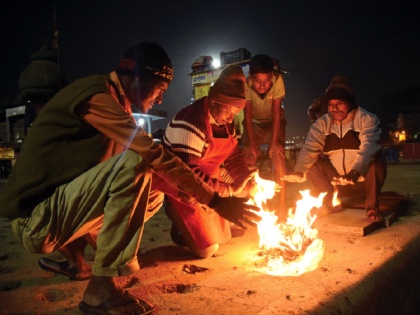Kashmir Faces Coldest Night in 33 Years, Power Cuts Leave Residents Without Modern Heating
By Lokmat English Desk | Updated: December 22, 2024 15:47 IST2024-12-22T15:47:00+5:302024-12-22T15:47:42+5:30
Kashmir is experiencing a severe cold wave, and due to repeated unannounced power cuts, many modern electric devices used ...

Kashmir Faces Coldest Night in 33 Years, Power Cuts Leave Residents Without Modern Heating
Kashmir is experiencing a severe cold wave, and due to repeated unannounced power cuts, many modern electric devices used to combat the cold are failing. As a result, residents are turning back to traditional methods of warmth. The region is in the midst of Chilla-e-Kaal, the coldest 40-day period of the year, with Srinagar experiencing its coldest night in 33 years on Saturday, with temperatures dipping below minus 8.5°C. Other areas of the valley also recorded sub-zero temperatures, leading to waterlogged pipelines in many regions.
In recent decades, urban residents in Kashmir had moved away from traditional heating methods like wooden hamam, bukhari, and kangri, relying instead on modern electric appliances. However, due to the ongoing cold and unreliable power supply, many are reverting to traditional practices. Power-operated appliances have become increasingly unusable because of frequent power cuts, which last up to 12 hours a day.
Yasir Ahmed, a resident of Srinagar's Gulbahar Colony, shared that in the past, people had become accustomed to using electric devices for warmth. Abdul Ahad Wani from Rainawari, in the Old City, explained how he switched from a wood-burning hamam to an electric one, only to find that due to the power cuts, the electric device is no longer reliable. He said, "Those in power have a habit of proving us wrong." With limited availability of LPG and kerosene, and ongoing electricity shortages, the demand for traditional fuel sources like wood and charcoal is rising, benefiting traders like Mohammad Abbas Zargar, who reports strong demand for firewood this season.
An official from the Kashmir Power Development Corporation (KPDCL) clarified that while the demand for power increases during the winter, power cuts of up to 16 hours are sometimes wrongly claimed. The official explained that power outages often occur due to overloaded circuits and damaged infrastructure, as the system struggles to meet the increased demand.
Open in app